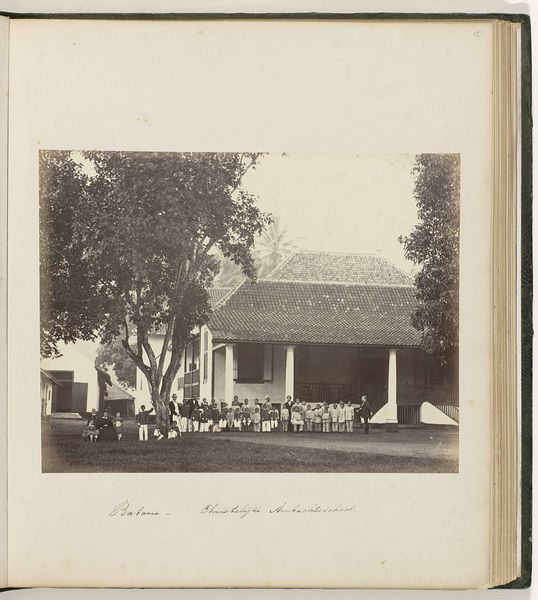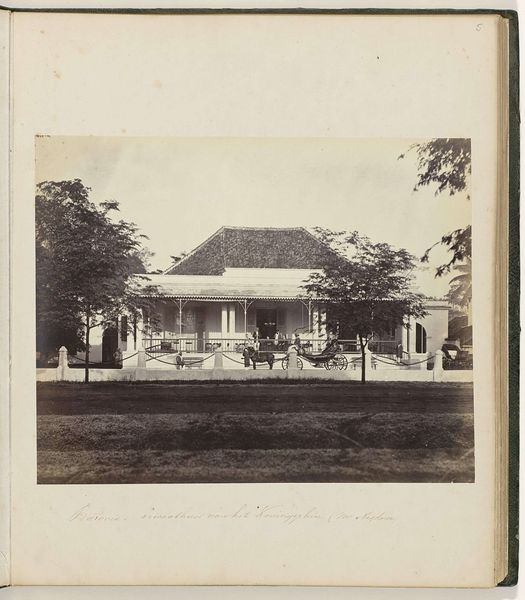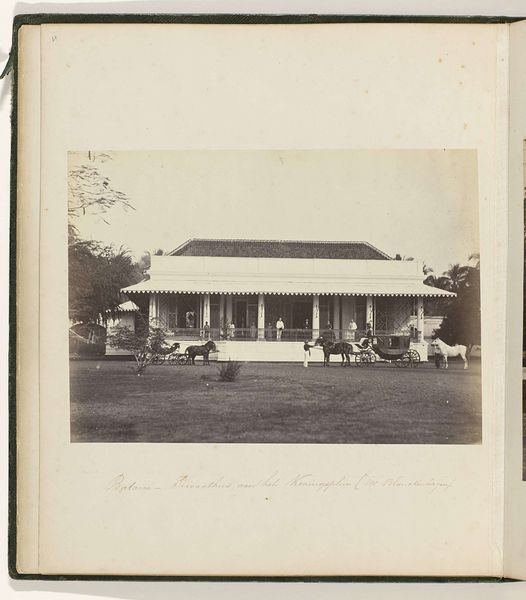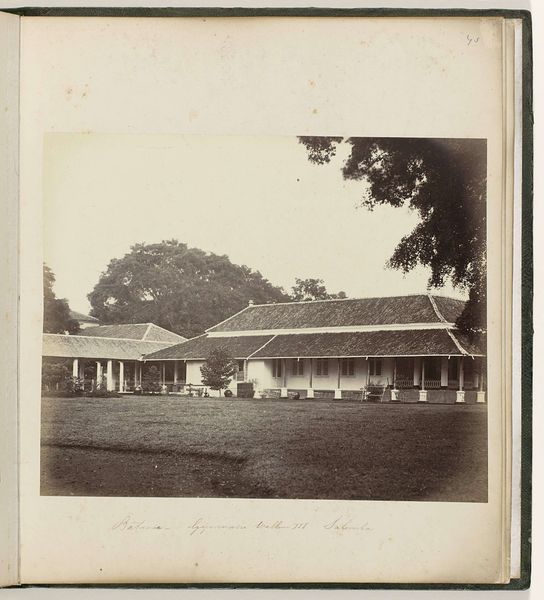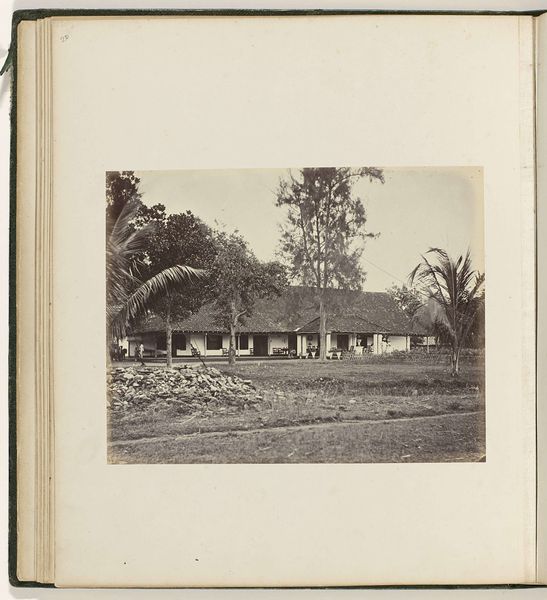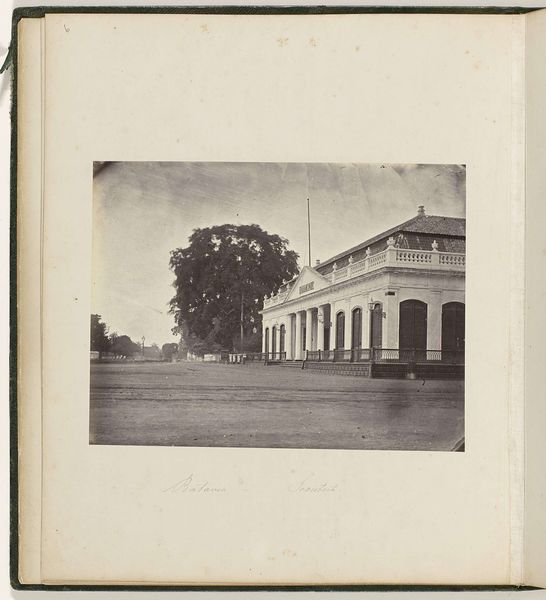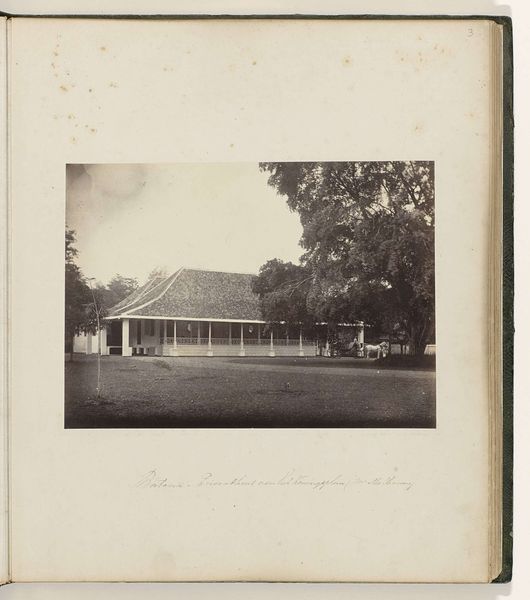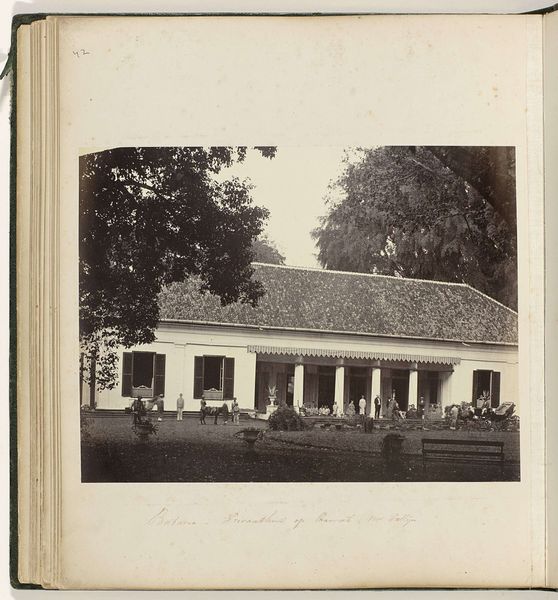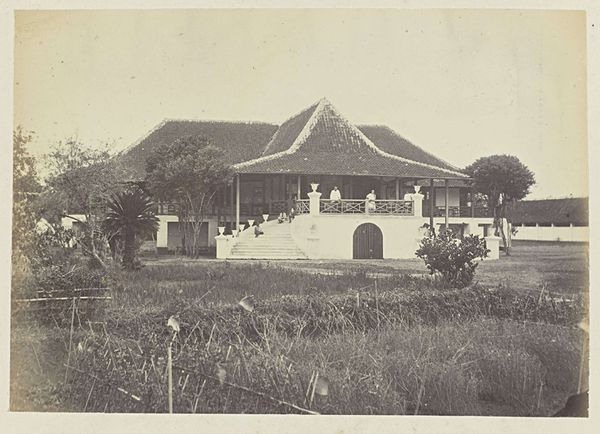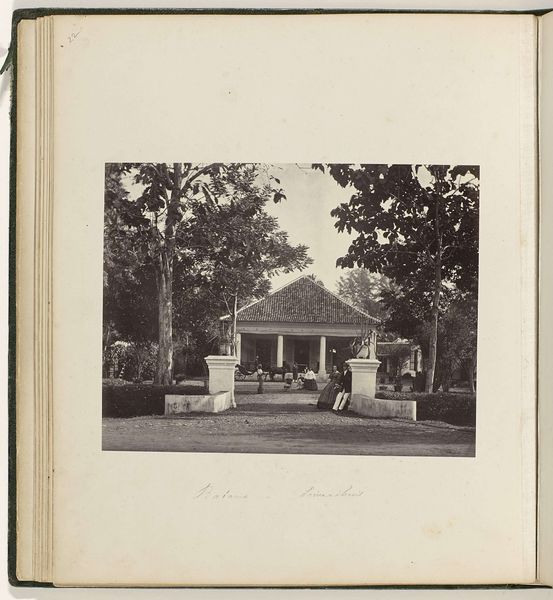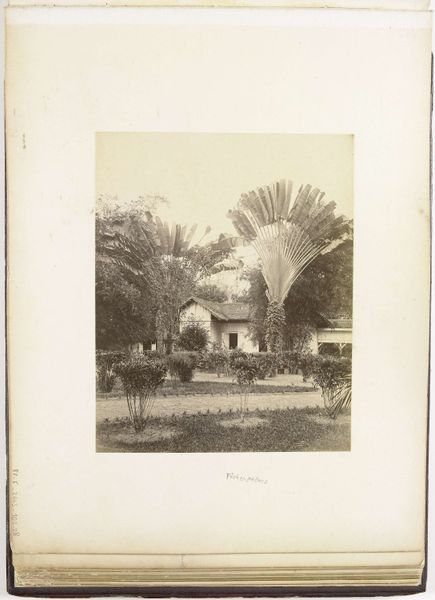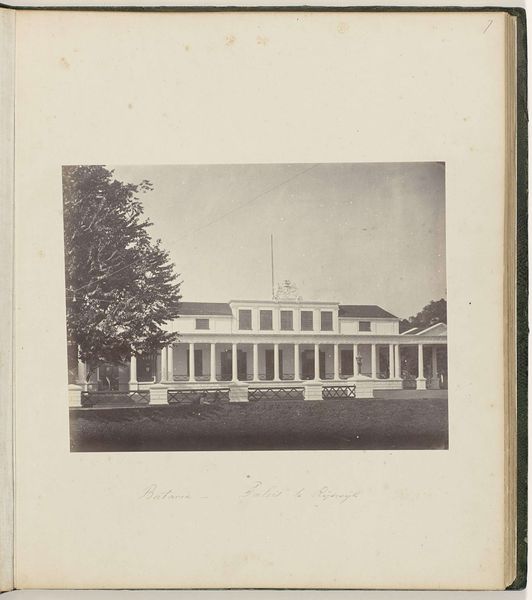
Dimensions: height 184 mm, width 233 mm
Copyright: Rijks Museum: Open Domain
Editor: This is an albumen print titled "Batavia - Noordwijk," made sometime between 1863 and 1866 by Woodbury & Page. I find it quite striking how crisp the details are despite its age. The photograph feels carefully staged. What draws your eye when you look at it? Curator: I see a fascinating document of colonial labor. This albumen print, presented within an album, highlights the materials of its construction—the paper, the silver salts. We must consider the labor involved: from the photographers, Woodbury & Page, to the local populations captured, often exploited, to produce such imagery. Editor: Exploited? Curator: Consider the context: Batavia, now Jakarta, was then the capital of the Dutch East Indies. Photography, like the commodities traded there, became another tool for imperial documentation and control. Who benefited from its production and consumption? The image's "crisp details" served a colonial gaze, presenting an idealized version of Batavia. Editor: So the material itself carries a historical weight? Curator: Precisely. The very act of producing this photograph was embedded in systems of power. Think about the resources needed to produce these images—the silver, the chemicals, the paper. All connected to global trade networks shaped by colonial expansion. How were these materials sourced and by whom? What does the tonal quality suggest? Editor: I never considered it from that angle. So the material properties of the photograph aren't just aesthetic, they're also…political? Curator: Absolutely. The photograph serves as a lens through which we examine the intertwined histories of labor, material culture, and colonialism. Examining the tangible nature of art offers invaluable insights into broader social and economic structures. Editor: I’ll definitely think about photographs differently from now on. Thank you for sharing your knowledge about the production context. Curator: And thank you for your insights. Reflecting on production enriches our understanding of what such art means, then and now.
Comments
No comments
Be the first to comment and join the conversation on the ultimate creative platform.
